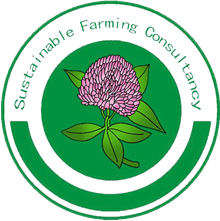Growing Community Supported Agriculture
I write this in a state of heightened anticipation, for next month I start a new job. I will be the ‘Community Supported Agriculture Development Worker’ for Wales at the Federation of City Farms and Community Gardens. It’s part of a wider community growing project called Tyfu Fyny (welsh for ‘Growing up’) and funded through the Rural Development Plan for Wales, for which I am suitably grateful.
For those of you not familiar with ‘CSA’ it’s a local food system with a difference. That difference is that rather than buying a fixed amount of produce for a fixed price, consumers – or members as they are usually known – often pay a regular subscription to a local farm and receive a share of the produce. Why is that important? Because it shares the risks as well as the benefits of food production between farmers and society, risks that usually fall full square on the shoulders of producers. It helps farmers become truly resilient, something so often talked about but so seldom seen. It puts cash into the business when it’s needed most at the beginning of the season and it guarantees a market and a fair price at the end. And because demand is totally predicable, waste is reduced or even eliminated. (More on CSA)
Fine from a producer’s perspective, but what do consumers get out of it? First and foremost, access to locally produced, fresh, often certified organic/ biodynamic food. But there is much more to it than that. Building direct relationships between producers and consumers is at the heart of CSA thinking. Members often visit the farm regularly to pick up their shares, help out with production or packing, or to attend one of the social gathering that are a regular part of many projects. And in doing so get to meet not only the farmer, but each other. I once heard CSA described as ‘a bit touchy feely’. If that means getting to know people you wouldn’t otherwise meet, learning new skills, understanding where your food comes from, getting some fresh air and exercise and having a few beers at the harvest party – then yes, it is. And that’s a good thing – Touchy feeliness is what humans use to build relationships and it’s how we keep our communities together. It’s how we make our societies function properly and, in my view, we need more of it.
Anyway, back to the job. There are 11 of these projects in Wales at the moment, and a large part of my job will be to strengthen them. That means helping them to build their membership numbers to a level where the projects are financially robust; helping producers understand their businesses so they get their prices right; promoting and explaining the concept of CSA to the general public; facilitating access to land for those projects needing to expand; and making the case for a policy environment, post Brexit, that supports rather than hinders these exemplars of ‘public good agriculture’.
I’m also there to grow the movement as a whole, which essentially means helping new projects to establish. Eleven projects, by any measure, is not a big number (although there are to my certain knowledge another 4 in development) and if CSA is going to make a serious contribution to feeding the nation then the number of projects has to increase by an order of magnitude.
Ten of the eleven are entirely or mainly based on fruit and vegetables and there is absolutely nothing wrong with that. But given that more than 95% Welsh agriculture is livestock based, there is a serious mismatch between what Wales produces, what people need for balanced and healthy diet, and what Welsh CSA’s collectively and currently offer. Addressing that mismatch will be one of my priorities. It won’t be easy. There are good reasons why things are as they are: a lack of killing, cutting and packing facilities for small scale livestock producers; strong seasonality especially for lamb; and a whole different level food safety legislation for meat and dairy produce. But it is possible.
The other issue is that of reach. At the moment, there is a strong bias towards rural communities and small towns. Banffosfelen in Carmarthenshire has, for the sake of argument, 500 people and 1 CSA. Cardiff and Swansea, with populations of 350,000 and 250,000 respectively are served by the same, single, number of projects. In Wales at least, we are simply not feeding the cities, and if we’re going to be of any significance in the wider world of food and farming, we need to start doing so.
I don’t, by any stretch of the imagination, have to do it alone. The CSA Network UK is well established and within its membership has a breadth of knowledge and experience on which I can and will draw constantly. Wales has its own regional network, which brings together the expertise and local knowledge that will be the life blood of the project. It will be challenging – the post would not have been created were it otherwise – but it will also be exciting, satisfying and, knowing the CSA community as I do, a lot of fun.
I can hardly wait!
